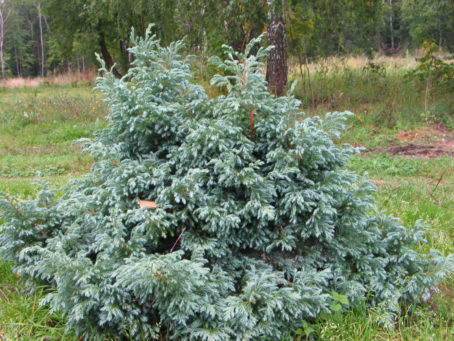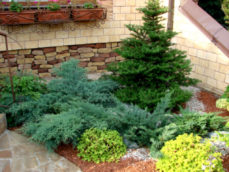Pea cypress is an evergreen coniferous plant, reminiscent of the appearance of Tuyu known in landscape design. At present, the representative of the Asian region, which began to be cultivated in culture as far back as the 18th century, has become very often used for landscaping personal plots and park zones in temperate latitudes.
Material Content:
Pea cypress: description of the species and varieties
The species that fell into the Middle lane from Japan is represented by a tall tree with brown-red bark, which in the natural environment can grow up to 30 m in height. Openwork crown in the form of a cone formed by sprawling branches, has a bluish-blue color. The name of the species is due to small cones up to 6 mm in diameter of a yellow-brown color, reminiscent of peas.
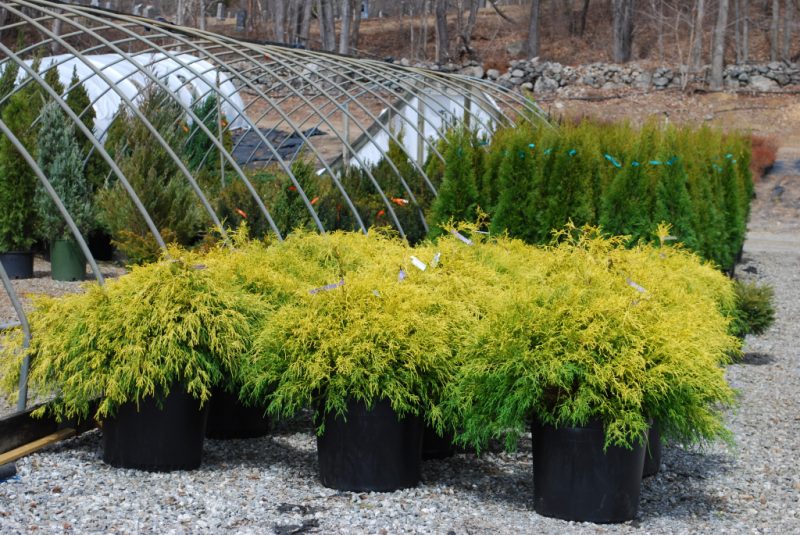
In warmer areas, a variety such as pea cypress “Boulevard” is common, it stands out for its low winter hardiness, slow growth rates and a silver-blue skittle in the shape of a bowling pin. Also not less popular are such cultivars of Cypress pea as "Filyfer", "Nana". Moreover, the last variety refers to low-growing conifers with a height of not more than 60 cm, a diameter of up to 1.5 m and scaly needles of a blue hue.
Planting in open ground
In order for the result in the garden to correspond to the description of the plant in encyclopedias, it is necessary to properly plant the cypress.
Site selection and soil requirements
Pea cypress can perfectly develop in slightly shaded areas of the garden with a deep occurrence of groundwater and fertile soil. In addition to a good fertile layer, the soil should have a slightly acid reaction and good drainage qualities.
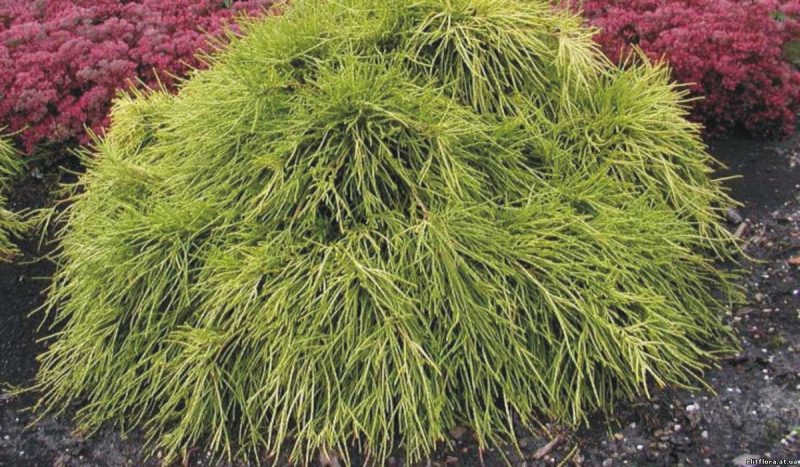
Preparation of planting pits with the simultaneous application of fertilizers should be carried out in the fall.
- In the selected area, a pit is excavated with a depth of 1 m and a diameter of up to 60 cm.
- Broken bricks are placed in each hole as a drainage layer and a special fertile substrate of sod land, humus, peat and sand in a ratio of 3: 3: 2: 1.
Landing technology

In mid-spring, when the earth warms up, you can begin to plant a seedling:
- The seedling is installed on the settled fertile soil mixture and is filled with a substrate with a composition similar to autumn.
- The root neck rises 10 cm above the ground.
- The trunk circle is watered.
- After soil subsidence, if there is such a need, a support is established to which a thin seedling is tied.
How to care for pea cypress?
When performing simple care measures, the gardener will be able to provide the cypress tree with a long life and preservation of decorativeness.
Watering and humidity
The coniferous tree needs regular watering, which in moderate weather is carried out at the rate of a bucket of water for one plant once a decade.

In dry periods, the plant is moistened more often and with a large volume of water. To increase air humidity, it is recommended to sprinkle the crop: adult plants are sprayed weekly, and young plants are sprayed daily.
Tillage
The near-trunk soil is systematically loosened with the simultaneous removal of weeds. You can also cover the soil under the plant with a layer of mulch, which will reduce the frequency of moisture, cultivation and weeding.
Top dressing
The coniferous perennial is fed only in June-July.

This is done using complex mineral fertilizers with a concentration of half that indicated on the package. The interval between top dressings containing all the necessary nutrients is 10 - 15 days.
Trimming and trimming a decorative plant
- A shaping haircut, in which it is not recommended to remove more than 30% of the shoots, begins a year after planting the conifer in open ground, when it builds up a good root system.
- Every spring, the crop is cut off for sanitary purposes: all dry and frozen branches are removed.
- Autumn haircut of Cypress cypress is carried out by shortening the young growth by ⅓.
Prevention and treatment of diseases and pests
Despite the natural resistance of the cypress to damage by harmful organisms, this conifer can be attacked by sucking pests such as scabies and spider mites. For the fight, insecticidal drugs of systemic action are used.

Among the diseases, the most common is root rot, the development of which is associated with stagnation of water in the roots of the plant due to systematic overflows or the lack of a good drainage layer.
Breeding methods
To preserve the varietal and species characteristics of the plant, during its propagation, preference should be given to vegetative techniques.
Cuttings
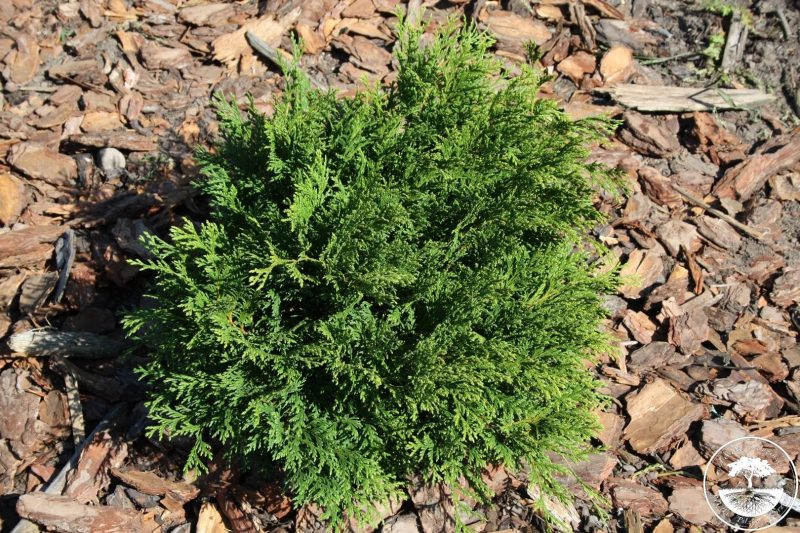
Cuttings are cut 5-15 cm long from apical shoots, after which they are buried in a substrate of sand, perlite and pine bark in equal parts. Plantings are covered with plastic bottles to create a greenhouse effect, which allows to accelerate the process of root formation
Propagation by layering
This method of propagation is suitable for the undersized cultivar "Nana", whose shoots are located close to the ground. To implement the method, the lower branches with the notched sides are pinned into the grooves and sprinkled with earth.After the formation of roots, layers are separated from the maternal specimen.
Pea cypress in landscape design
The decorative plant easily found application in landscape design during design:
- rock gardens and rockeries, where low-growing varieties, including the well-known cultivar "Nana", perfectly fit into the stone composition;
- front gardens and recreation areas as single landings or in groups with junipers of various shapes;
- alleys where cypress trees land along the paths.
Thus, pea cypress is a perennial conifer with excellent decorative qualities and care is no more difficult than for arborvitae or junipers.


